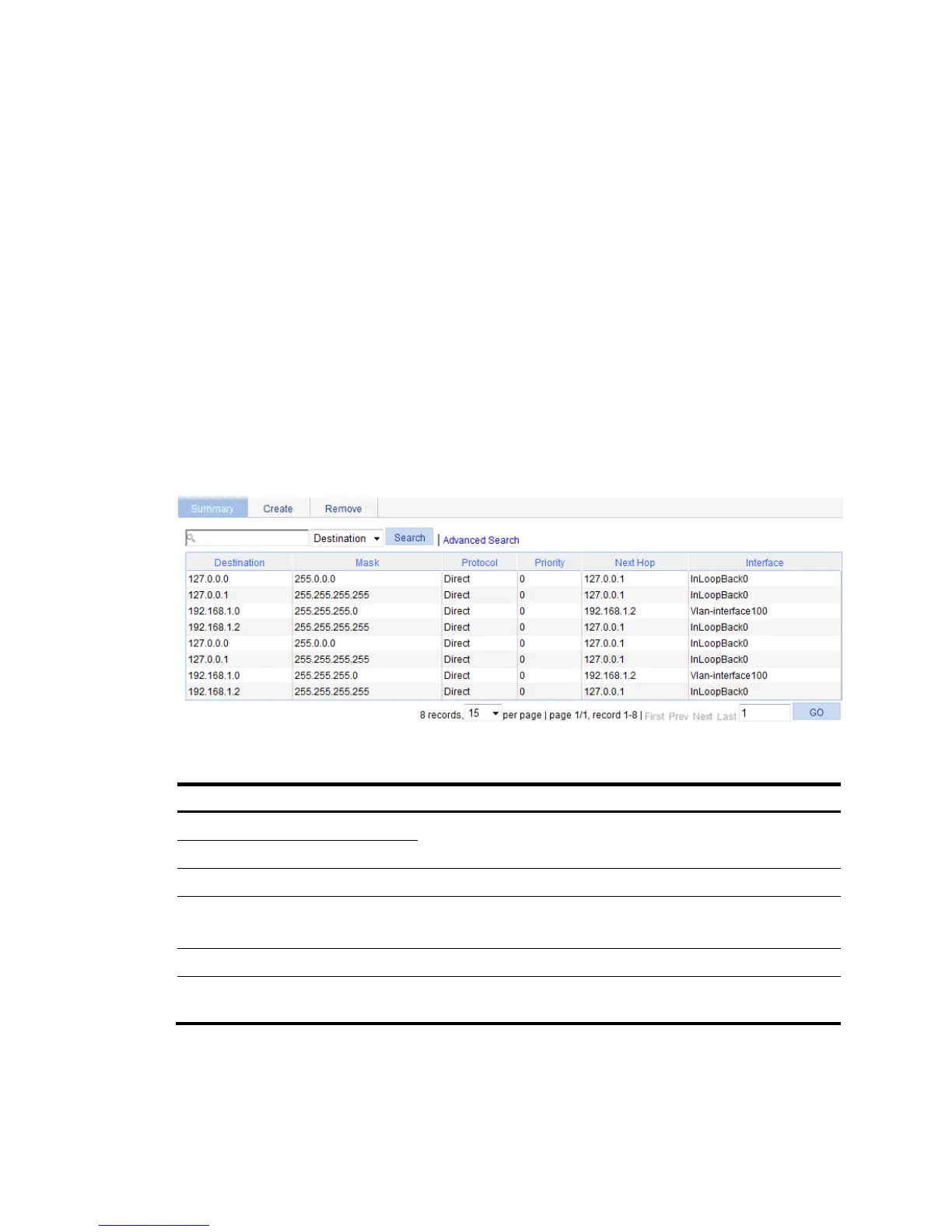279
Static routes cannot adapt to network topology changes. If a fault or a topological change occurs in the
network, the network administrator must modify the static routes manually.
Default route
A default route is used to forward packets that do not match any specific routing entry in the routing table.
Without a default route, packets that do not match any routing entries are discarded.
You can configure default routes in the Web interface in the following ways:
• Configure an IPv4 static default route and specify both its destination IP address and mask as
0.0.0.0.
• Configure an IPv6 static default route and specify both its destination IP address and prefix as ::/0.
Displaying the IPv4 active route table
Select Network > IPv4 Routing from the navigation tree to enter the page.
Figure 254 IPv4 active route table
Table 90 Field description
Field Descri
Destination IP Address
Destination IP address and subnet mask of the IPv4 route.
Mask
Protocol Protocol that discovered the IPv4 route.
Preference
Preference value for the IPv4 route.
The smaller the number, the higher the preference.
Next Hop Next hop IP address of the IPv4 route.
Interface
Output interface of the IPv4 route. Packets destined for the specified
network segment are sent out of the interface.

